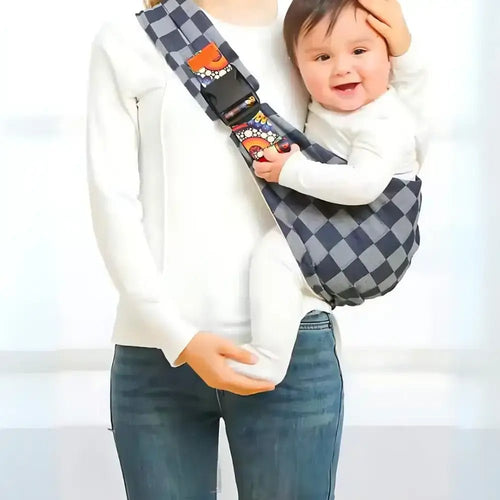
The Ultimate Guide to Choosing a Twin Baby Carrier
Welcoming a new baby—sometimes two!—is pure joy, but it also means you need hands-free help for everyday life. This guide explains carrier types, twin vs. single use cases, hip-healthy positioning, and practical safety tips. If you’re not sure where to start, an ergonomic single baby carrier is the most versatile, budget-friendly choice for most families—and still useful for twin parents (one baby at a time).
Why Babywearing Helps (Even with Twins)
- Hands-free comfort: Move safely at home or on quick errands.
- Bonding & soothing: Close contact can reduce fussiness.
- Sleep-friendly: Low-stimulus, upright cuddles between feeds.
- Practical: Lighter and quicker than a double stroller for short trips.
Carrier Types at a Glance
1) Soft Structured Carrier (SSC)
Padded straps + supportive waist belt. Easiest for daily use and longer wear. Great for most newborn-to-toddler journeys.
2) Wraps
Long, stretchy fabric; very cozy for newborns. Requires practice to tie well; best for short, calm periods.
3) Hybrids
Wrap-like softness with some structure. Faster than a full wrap, softer than a classic SSC.
Twin Options vs. Single Carrier: What Actually Works
Twin-specific carriers (e.g., new-born focused models) can help in the first months but are often outgrown quickly and may feel specialized. Many twin families still rely on a single ergonomic carrier for daily life—one baby at a time—while the other rests in a stroller/bassinet, or parents split duties.
- Newborn stage (0–6 months): Skin-to-skin and short, frequent carries. If you choose a twin-specific model early on, expect limited use time.
-
Beyond 6 months: A quality single SSC usually provides the best long-term value, support, and comfort.

Safety: The Non-Negotiables
- Airway clear: Baby’s face visible; chin off chest; no fabric covering nose/mouth.
- Hip-healthy “M” position: Knees higher than bottom; thighs supported.
- Snug & high: Tight enough for support; “close enough to kiss.”
- Check weight/age limits: Follow manufacturer guidance for each carry position.
- Special cases: Prematurity, reflux, or medical concerns → ask your pediatrician/IBCLC.
How to Choose the Right Carrier
- Fit & support: Look for padded straps, supportive waist, and even weight distribution.
- Your body type: Adjustable designs fit multiple caregivers; test strap range.
- Fabric & climate: Breathable materials for warm weather; easy-care fabrics for daily use.
- Use case: Quick errands → SSC; soothing/at-home snuggles → wrap/hybrid.
- Budget & longevity: A durable single SSC typically covers the longest time span.
Breastfeeding-Friendly Tips
- Practice at home: Adjust in front of a mirror; use a burp cloth for drips.
- Upright latch: Keep airways visible; re-tighten after feeding.
- Comfort add-ons: For sore nipples, many moms use Silver Nursing Cups between feeds; a muslin nursing cover can help outdoors.
See Specs & Sizing — Go Mommy Baby Carrier
FAQ
Is a baby carrier safe for newborns?
Yes—when used as directed, with clear airways and proper head/neck support. Always follow the manufacturer’s age and weight guidance.
Can I breastfeed in a carrier?
Many parents do. Practice upright feeds, keep baby’s face visible, and re-tighten afterward.
Do I need a twin-specific carrier for twins?
Not necessarily. Twin models can help early on, but a high-quality single SSC is often the most useful long-term tool—especially when caregivers trade off or combine with a stroller.
How long can I wear my baby?
Start with short sessions and build up. Watch for baby’s cues and your own comfort; follow the carrier’s limits.
Educational only; not medical advice. Consult your pediatrician/IBCLC for personal guidance.


